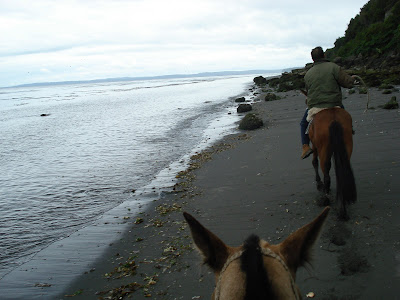(Click to enlarge any photo)

The small town of Puerto Octay is located on the northern shore of the third largest lake in South America, Lago Llanquihue (540 square miles), just north of Puerto Montt, gateway to the Lake District of southern Chile. Once an important point for the shipping of agricultural products during the years 1852-1952, Octay is now a sleepy town visited by tourists for some of the best photo opportunities in the region.

Osorno Volcano from Hotel Centinela

Cerro Puntiagudo and Puerto Octay

Invited by the Chilean government to settle the lands around Lake Llanquihue, German immigrants began arriving in the coastal town of Valdivia in 1852. Most were people of means who brought entire families, household items, and farm implements. The government provided each family with specific parcels of land, lumber, nails, a pregnant cow, and a yoke of oxen. They began to populate the area surrounding the large lake, forming small communities.


Puerto Octay became the place where farmers brought their products to be shipped across the lake to Puerto Varas, and then by land to Puerto Montt, where they could then be shipped to other points along the Pacific coast.
The first families to arrive in Puerto Octay were Wulf, Klagges, Schmidt and Ochs, among others. Some built their houses in the town.

Casa Yagoda, 1885. I had a nice lunch here today.

The Wulf House, now home of the Puerto Octay Health Dept.
I was fortunate to find a wonderful bed & breakfast about a mile and a half outside of town,
Zapato Amarillo. It is owned (and built) by a young Chilean-Swiss family. It is a supremely quiet and lovely place in the gentle countryside, with Osorno Volcano constantly in the view.

I have a room in this house at Zapato Amarillo. Señora Nadia offers dinner in the evening for guests, with some of the best cooking I have encountered in this country. (There I go talking food again!)

Appreciative of their history, the town has provided a modern barn built in the old style which houses a large exhibit of farm machinery.

Butter churn

A not so historic house, but colorful.





















































